As Blockchains Grow Bigger, Full Node Counts Increase

Back in 2016, the number of full nodes within the Bitcoin core network was dropping. At the time, Bitcoin enthusiasts thought the amount of nodes would continue to decline and the metric was used heavily in the scaling debate. However, in contrast to many people’s predictions, the count of full node BTC implementations has been rising, and over the past year, its node count is up over 106 percent.
What Is a Full Node?
A full node is basically a computer that connects to a cryptocurrency’s network and downloads every single block and transaction on the blockchain. Because full nodes record the entire blockchain’s network activity in real time, they rely on both storage and bandwidth requirements. A wide variety of digital assets that utilize blockchains have participants running full nodes on networks like dash, litecoin, bitcoin cash, ethereum, and bitcoin core. There are also a lot of ‘lightweight nodes’ which do not download entire blockchains but rather verify transactions by downloading the associated block headers. One of the cheapest methods of building a full node is using a Raspberry Pi computer, and a one terabyte external drive for roughly $100 USD. There are also many businesses that sell pre-manufactured full nodes but these are usually far more expensive.
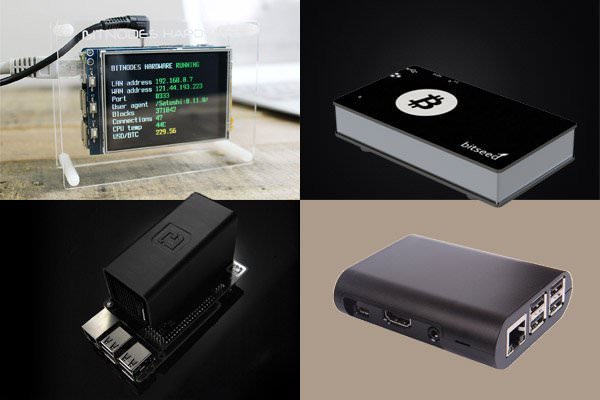
BTC Node Count Jumps to Over 11,000 Reachable Nodes In 2018
Currently, BTC has 11,703 detectable nodes that interact within that specific network. The number of nodes is never static and continually changes when participants either drop off the network or join. This metric has increased significantly over the past year, and the 12-month average has been roughly 8,643 nodes according to Bitnodes
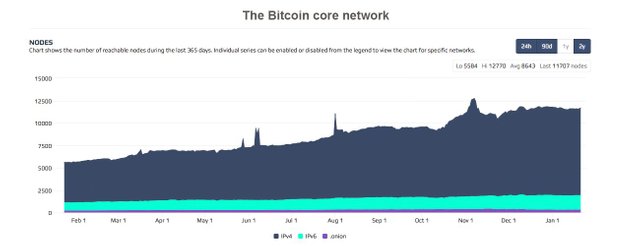
The leading countries with the most full nodes at the moment include the U.S., Germany, China, France, Netherlands, Canada, the UK, and Russia. Nodes are also operated in countries suffering from poor internet service and economic hardship such as Venezuela, Algeria, Mexico City, South Africa, Namibia, Pakistan, and Nigeria.
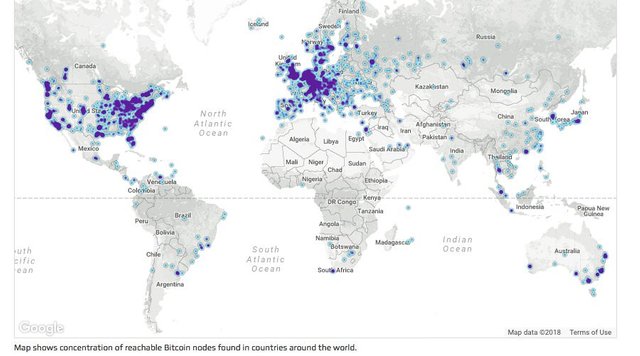
Core Software and Alternative Clients
There are multiple types of different forms of the BTC software within the network. According to the data website Coin Dance, there are 9,002 nodes running the Core software, 542 Bitcoin Unlimited nodes, 294 Bitcore nodes, and nine more implementations. Even after the intense scaling debate throughout the summer and into the fall, nodes signaling for the user-activated-soft-fork (UASF), and Segwit2x (BTC1) continues to this day. A large number of bitcoin core supporters are against alternate implementations and don’t recommend using them for “serious use because it is currently difficult to determine whether they implement the consensus rules with 100 percent accuracy.”
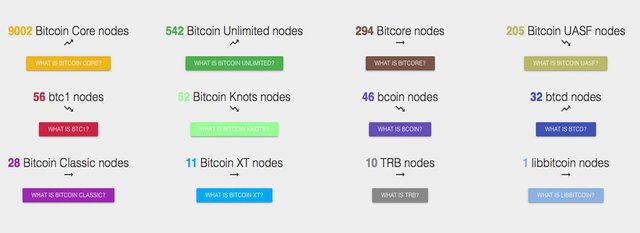
Alternative Clients Move Towards Supporting the Bitcoin Cash Network
Another interesting trend that has taken place over the last year was the August 1 hard fork and the bitcoin cash (BCH) blockchain split. Since the inception of BCH nodes, alternative nodes on the BTC network have dropped in numbers sharply. Implementations such as Bitcoin Unlimited, XT, and others started to assist the BCH network and contribute to its node count. Currently, BCH has 1,231 nodes between four types of clients. Bitcoin ABC is the dominant client with 1,024 nodes which is followed by Unlimited, XT, and some unrecognized implementations as well. BCH supporting nodes have also increased significantly over time, and their numbers saw all-time highs throughout November and December of 2017.

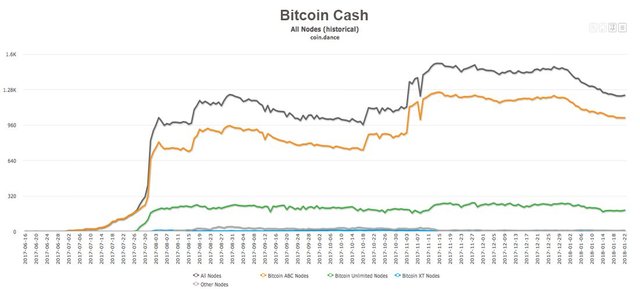
Even Though BCH Utilizes Bigger Blocks, the BTC Chain Is Still 20 GB Larger
Overall both the BTC and BCH blockchains have grown in size as far as storage capacity is concerned. Presently the bitcoin core network adds roughly 50 GB a year to the blockchain’s size, and the BCH chain is already 8,517 blocks ahead of the core chain. Most people would think that because BCH miners process much larger blocks, a full client’s storage size would be more substantial. However, as of today, the BTC chain has grown 20.66 GB more than the BCH chain, even with BCH blocks processed at anywhere between 2-8 MB in size. A majority of network nodes within both networks are lightweight clients due to the popularity of Simplified Payment Verification (SPV) wallets. Even though SPV clients still eclipse full nodes, both BTC and BCH full network node counts continue to rise.